Edible goodies,that nature gives us.(Mushrooms)
Autumn came, in September a great time, the nature changes its color, and in the woods full of mushrooms, about the most popular of them now, and let's talk!
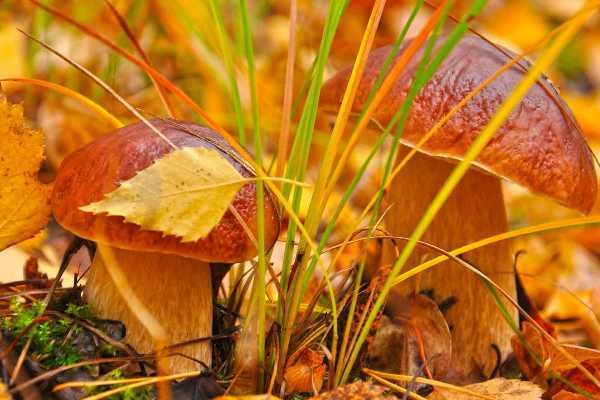
Chanterelle.
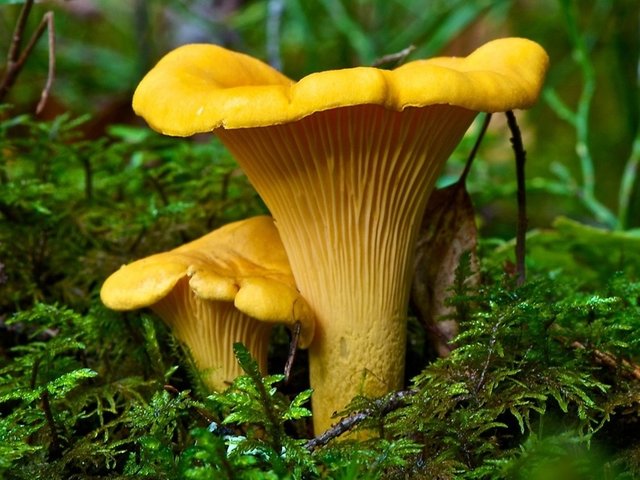
Chanterelle - the best known and most common of the 60 species that make up the kind of Vulpecula (the family Lisichkovye).
At the fungus short (4-6 cm.), Smooth, slightly narrowed to the bottom of the leg. To the touch it dense.
Foot firmly fused with a hat. Young fungus "headpiece" almost flat with a curved edge. Over time, the cap takes the form of a funnel with irregular contours. The edges are ragged, torn in places. Rare branched psevdoplastinki pass from the inside surface of the cap on the leg. The diameter of the head - in the range of 4-6 cm.
All the fruit body chanterelle colored in light yellow or orange-yellow color. Often there are faded almost to white copies. Bright orange chanterelles are only overripe. It is better to pass by.
The flesh is dense fungus. Top yellowish, closer to the center - whitish. When the incision / cracked felt a faint fruity odor.
Chanterelle never Worms. Mushroom deters mosquitoes and flies hinomannoza, so they prefer to lay their eggs in other places. If by chance rot fungus, rot is a point always in sight. This feature saves from disappointments in the processing of the crop.
Chanterelle grows in mixed and deciduous forests. But the most actively growing in pine forests. These fungi prefer mossy ground. They are visible from far away, hidden in the grass not, settle in large groups.
Chanterelle - suitable for human consumption species. The fungus can boil, fry and pickle. Admissibility and freezing followed by 2-3-month storage in a refrigerator. Furthermore, this fungus is suitable for drying. Dried at a temperature of + 40 ° C Chanterelles should be stored in cloth packaging. Even repeatedly reduced in size, mushrooms retain bright colors. By the way, after falling into boiling water volumes are reduced. Calorie fresh mushrooms is 23 kcal per 100 g, dried in increases to 261 kcal / 100 g
Besides unconditional taste, this fungus possesses useful properties. It is large content of copper and zinc, vitamins A, PP, B1 and B2, as well as pro-vitamin D. Substance hinomannoza not only discourages forest insects, but also great fights worms. True, salted or heat treatment, it is destroyed. To expel parasites from the body to eat raw mushrooms, used as a condiment dried milled or purchase medicines from the extracts of chanterelle.
Armillaria mellea.
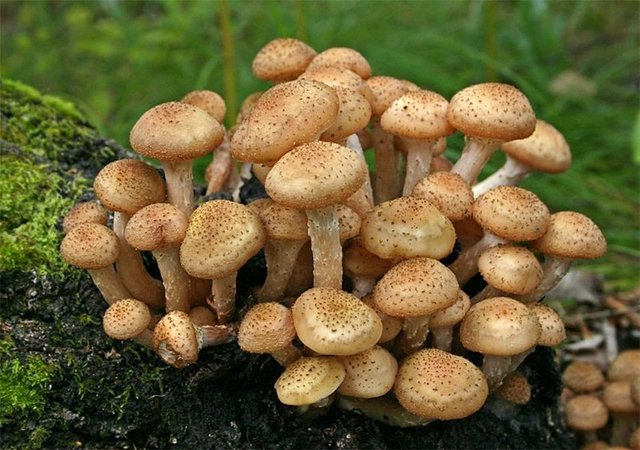
Armillaria mellea, honey agaric real (Latin Armillariella mellea.) - Mushroom family tricholomataceae.
A hat with a diameter of 3-10 cm, initially convex, opens to the flat, often with wavy edges. The skin can be colored in various shades of honey-brown to olive-green, in the center darker. The surface is covered with sparse light scales, they can disappear with age.
Flesh young hats thick, whitish, with age becomes thin; fiber in the legs, in mature mushrooms coarse consistency. The smell and taste pleasant.
The plates are relatively rare, adnate to the stem or slightly nizbegayushie. Young off-white or flesh-colored when ripe darken slightly, to pink-brown, brown spots can be covered.
Feet 8-10 cm long and 2.1 cm diameter, solid, light yellow to brown the surface, the bottom of darker brown to brown. At the base may be slightly expanded, but not swollen. The surface of the legs, as well as hats, covered with flaky scales. Fruiting bodies are often fused bases of the legs.
Remains covered: the ring in the upper part of the legs, usually just under the hat, well-marked, plёnchatoe, narrow, off-white with a yellow edge. Volvo absent.
White spore print, the spores 8,5 × 5,5 mm, shirokoellipsovidnye.
Conditionally edible mushroom, undercooked can cause digestive disorders. In the West, honey agaric unpopular, considered of little value, sometimes even inedible, while in Russia and Eastern Europe in large quantities is collected and used, it is considered one of the best plate of mushrooms. According to a questionnaire survey conducted in the Crimea, 60% mushroom pickers collect mushrooms, mainly autumn. Many pickers are selected for eating only the young specimens.
Honey agaric contains valuable trace elements, which play an important role in hematopoiesis, so 100 g of honey agaric satisfy the daily requirement for zinc and copper.
Honey mushrooms are eaten salted, pickled, fried, boiled and dried form.
Lactarius aspen.
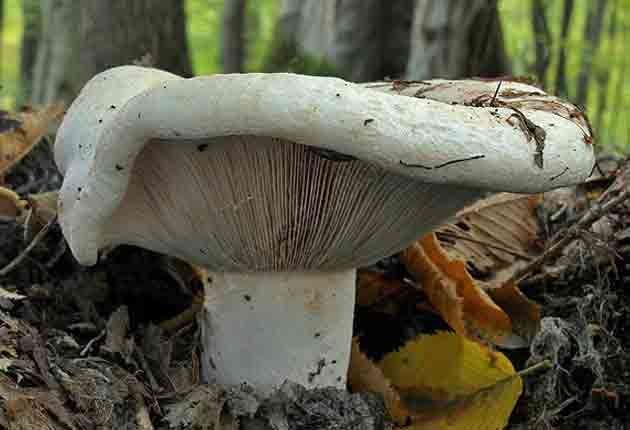
Lactarius aspen (lat Lactarius controversus.) - Sort Mlechnik fungus (lat Lactarius.) Family Russula (Latin Russulaceae.).
Cap ∅ 6-30 cm, very fleshy and thick, plano-convex and slightly depressed in the center, young mushrooms curved down slightly fuzzy edges. Then straighten the edges and often wavy. The skin is white or spotted by pink spots, covered with fine fuzz and wet weather quite sticky.
The flesh is whitish, thick and brittle, with a slight fruity flavor and quite spicy taste. Highlights abundant milky juice of white color, without changing the air, bitter.
Foot 3-8 cm in height, strong, short, very dense, and sometimes eccentric, often constricted at the base, white or pinkish.
The plates were frequent, rather narrow, sometimes forked and descending on the leg, cream or pale pink
Spore powder pink, Disputes 7 × 5 mm, nearly rounded, folded, venous, amyloid.
Conditionally edible mushroom, used mainly in salt form, rarely - fried or boiled in the second dishes. Valued less than the real agaric agaric and yellow.
Volnushki pink.
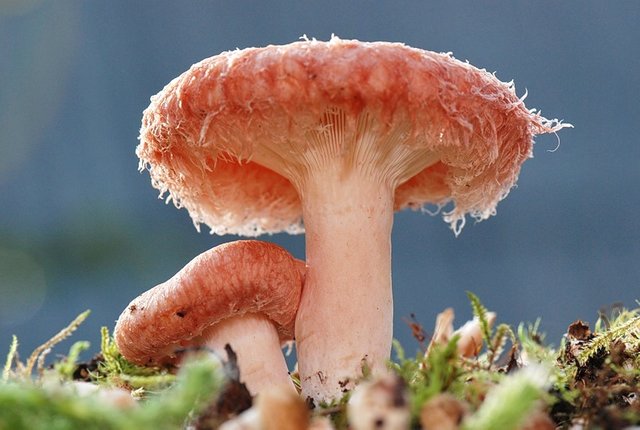
Volnushki pink (Latin Lactarius torminosus.) - Sort Mlechnik fungus (lat Lactarius.) Family Russula (Latin Russulaceae.)
The diameter of 5-10 cm (up to 15), pinkish-red, with dark concentric zones, in his youth a convex, then flat, dents in the center, with a wrapped down downy edges. Myakost white or light cream, brittle, weak resinous smell, on a break allocates white acrid juice.
The Russian Related edible mushroom of good quality, is used in salted and pickled, sometimes fresh in the second dishes. Especially appreciated in Zasole young mushrooms (with Diamer cap no more than 3-4 cm), the so-called "curls". Before cooking requires a thorough soaking and blanching. The blanks yellow. Along with Lactarius flexuosus (Lactarius flexuosus) and this penny (Lactarius resimus) refers to the main mushrooms, procured the population of the north for the winter. The ratio of the workpieces varies depending on the yield, but most predominate volnushki. In Central and Southern Europe in the food do not eat. In Finland, by contrast, after 5-10 minutes of blanching, even fried.
Suillus.
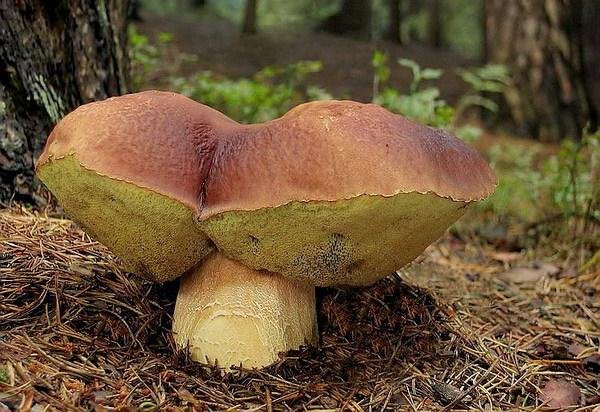
Suillus (Latin Suillus.) - Sort of tubular edible fungi family Maslёnkovye (Latin Suillaceae.), Included in the order Boletovye (Boletales).
A hat from a convex shape to a flat, smooth, usually sticky or slimy, easy to peel. Perhaps the presence of the private covers.
Hymenophore easily separated from the cap; adherent or downward on the stem, yellow or white.
Stem solid, smooth or grainy, sometimes with a ring - the remnants of the private covers.
The flesh is whitish or yellowish, on the cut can change the color to blue or red.
Spore print different shades of yellow.
According to the content of fats and carbohydrates boletus ahead boletus edulis (mushrooms). Suillus luteus - One of the most common types of edible mushrooms, in its productivity has been ranked in the coniferous forests.
Edible, tasty mushroom second category, in taste is very close to the white mushrooms. Before use, the skin better with the cap removed. It is used in dried, fresh, pickled and salted.
Orange-cap boletus.
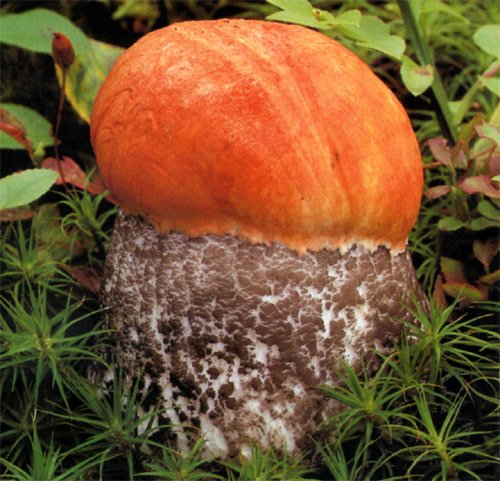
Boletus (osinovik, krasnogolovik) - the common name for several species of fungi of the genus Lektsinum (leccinum) (Latin: Leccinum.). Differ orange-red (sometimes white) cap and bluish fungus flesh on the cut. From podberёzovikov also differ usually thicker, "stocky" foot and firm flesh of the cap.
Since all aspen mushrooms are edible and almost identical in nutritional qualities, mushroom pickers do not always distinguish between their views. However, mushroom hunting is useful to know the environmental features of different kinds.
The name "boletus" are connected not only with the typical habitats of these fungi, but also with the color of hats, reminiscent of autumn colored aspen leaves.
Cap diameter 4-15 (rarely up to 30) cm, initially hemispherical with a tightly pressed against the edge of the leg, then cushion-convex shape, is easily separated from the stem. The skin is red, orange or brownish-red, smooth and velvety with a weak, can not be removed.
The flesh is meaty, dense, elastic in a hat, with age becomes soft in the leg longitudinal fibrous. The color white on the cut in the bottom of the bluish legs, quickly becomes blue and then black. Taste and smell are not expressed.
Red aspen forest
The tubular layer of loose, white, then it becomes brownish-gray, maybe with olive or yellowish tinge. Duct lengths of 1 - 3 cm with small angular-rounded pores, the porous surface of the touch dark.
Leg height of 5-15 cm, a thickness of 1.5-5 cm, a solid, often in the lower part is expanded. The surface of the gray-white, covered with longitudinal fibrous scales, they are white at first, becoming brownish with age.
Spore print is olive-brown spores (13-17) × (4-5) mm, smooth, fusiform.
Well-known edible mushroom, many put it in second place after the quality of the white mushroom. Use fresh (boiled and fried), dried and pickled species for salting. When processing is usually dark, but in the marinade keeps the natural look. To prevent or reduce mushrooms darkening before cooking soaked in a 0.5% solution of citric acid.
Brown cap boletus.
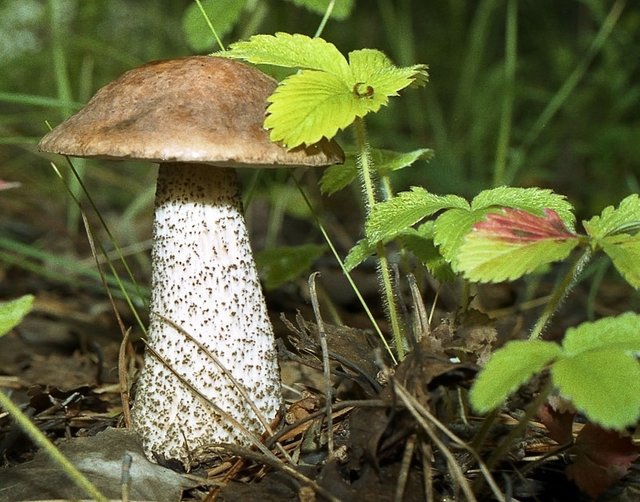
Boletus ordinary (Leccinum scabrum)
At boletus cap can vary from light gray to dark brown (color depends, obviously, on the growing conditions and the type of wood, which formed mycorrhiza). Form - hemispherical, then Pillow, naked or fine-felt, up to 15 cm in diameter, in wet weather a little slimy. The flesh is white, does not change color or slightly turning pink, with a pleasant "mushroom" smell and taste. The old mushroom flesh is very spongy, watery.
Normal edible mushroom. In some (Western) sources indicate that only edible hats and legs allegedly too hard. Absurd! Cooked just different hats nauseating gelatinous consistency, while the legs are always Kripen'ka collected. The only thing that all reasonable people agree - is that in older mushrooms tubular layer must be removed. (And, ideally, to refer back to the forest.)
Ginger.

Ginger real (lat. Lactarius deliciosus) or simply Ginger is well distinguished from other fungi.
Cap 3 - 15 cm in diameter, tolstomyasistaya flat at the beginning, then funnel-shaped, the edges are wrapped inside the smooth, slightly slimy, red or whitish-orange color with darker concentric circles (variety - upland saffron) or orange with a clear bluish-green tone and the same concentric circles (a type - spruce saffron), the touch is colored greenish-blue color.
Ginger - edible mushroom of the first category.
Used mostly for salting and pickling, but you can use it and fried.
For drying unsuitable.
Before salting mushrooms should not be soaked, as they can go green and turn black, even, enough to clear them from the trash and rinse in cold water.
In medicine
From this release Ryzhik laktarioviolin antibiotic that inhibits growth of many bacteria, including Mycobacterium tuberculosis.
Porcini.
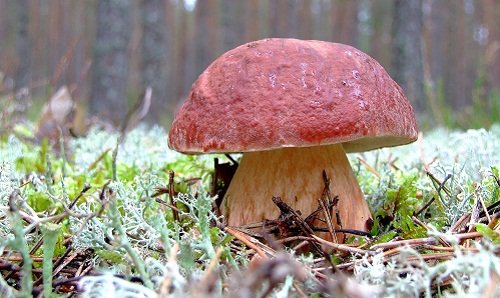
Boletus edulis (Latin Boletus edulis.), Or boletus - tubular edible mushroom Boletus genus (Latin Boletus.), Family Boletovye (Latin Boletaceae.).
White fungus - edible mushroom, and in Eastern Europe, he is considered one of the best mushrooms in taste, but there are some types of fungi that looks somewhat similar to the white, but in fact, they are not only edible, but also are dangerous mushrooms, for example - the satanic mushroom.
In people, white fungus is referred to the so-called "noble fungus", and referred to as "the king of mushrooms."
The most tasty think white mushrooms found in the spruce-birch forests. Collected in the pine mushrooms, do not have a strong flavor and are more friable pulp.
White fungus used fresh (boiled and fried), dried and pickled forms. When dried mushrooms darken and take on a special smell. In the form of mushroom powder (dried and ground) is used for charging different dishes. In Italy, used raw in salads, dressed with butter, spices, lemon juice with the addition of Parmesan cheese. Sauces of white fungus are well suited to rice and meat dishes.
According to the content of nutrients white fungus does not differ markedly from other fungi, and some types are superior to its protein content (boletus) or micronutrients, such as potassium, phosphorus (morel, chanterelle).
Besides taste, nutritional value of mushroom is due to its ability to stimulate the secretion of digestive juices. Research was conducted sokogonnym properties of different fungi (white, boletus, podberёzovika, Dubovik, chanterelles), which showed that it was white mushroom is the best stimulator of digestion, surpassing even the broth.
In the beginning of the XX century were carried out studies showing that protein-prepared edible fungus is very difficult to digest, as enclosed in the walls of chitin, which do not operate digestive enzymes. Later it was found that, after drying, the protein becomes available to the digestive system, up to 80% digestible protein cep dried.
(source : http://leshoz-logoysk.by)
Well, in the completion of the theme of mushrooms,I want to brag have personally collected mushrooms...
Brown cap boletus and Porcini.



Choose the right mushrooms and will arrive with you health!

Very nice photos!
Hello @favorit,
It gives us pleasure to inform you that this post have been upvoted by Project Better.
The Mission of Project Better is to reward posts have many votes from Minnows but earn pennies.
Your payout is $0.034 before we vote on your post.
Learn more about the Project Better here! ,
Want to donate your voting power to support Project Better and earn curation rewards? Click Here!
We hope to see you continuing to post some great stuff on Steemit!
Good luck!
~BETTER~
We would like to add your post to the @foraging-trail curating team for upvoting, but we need to confirm the images are yours. If you’re using images, quotes, or copied information from another source, cite those sources accordingly. If you use your own imagery, please let us know by adding a sentence in your post saying so. You can find out more here and here.
You have some great information about edible mushrooms in here. I like seeing your personal photos the best.